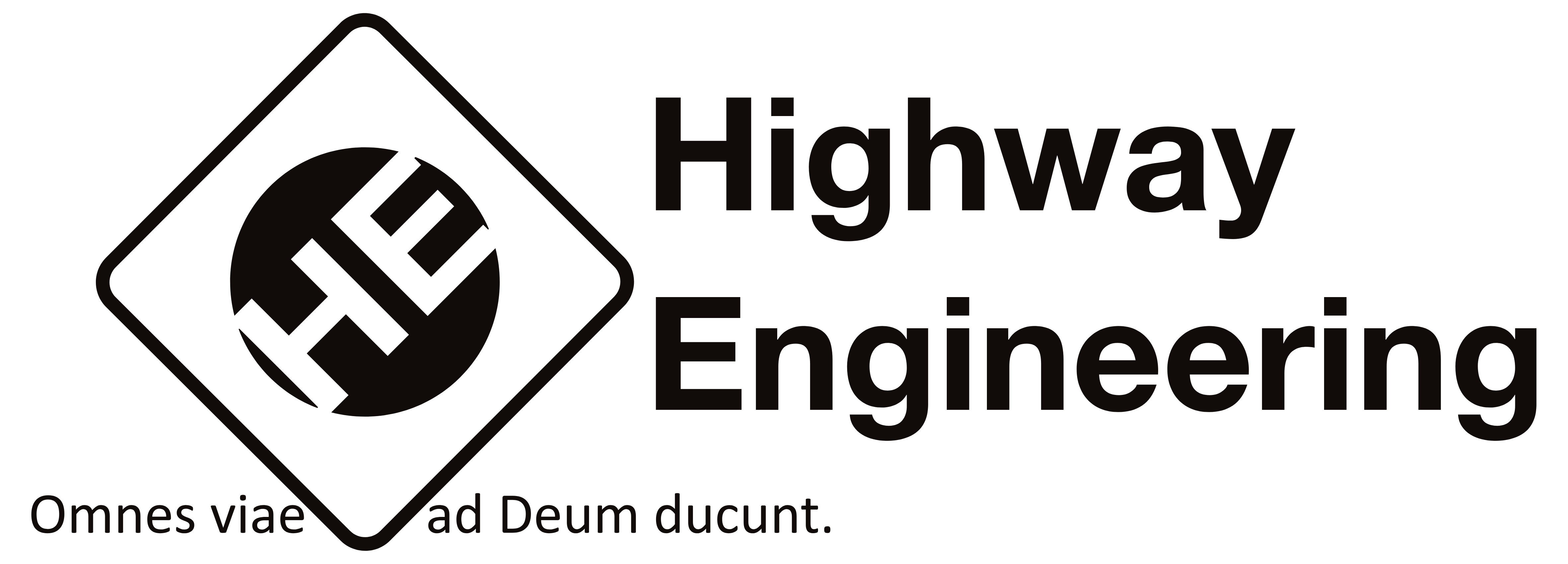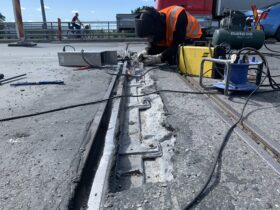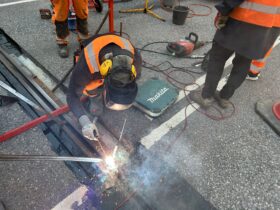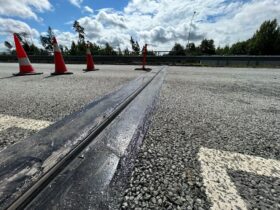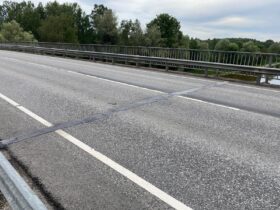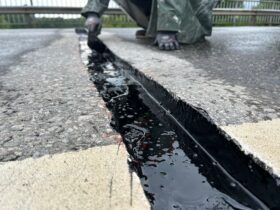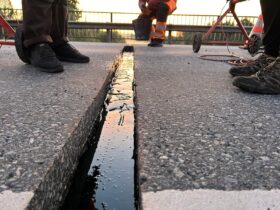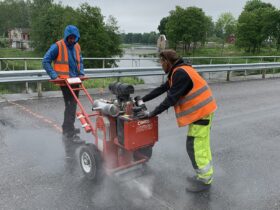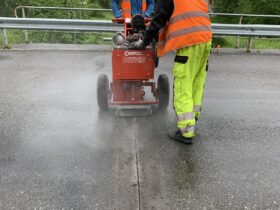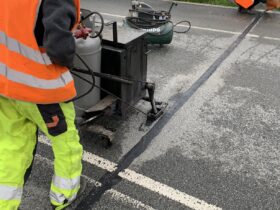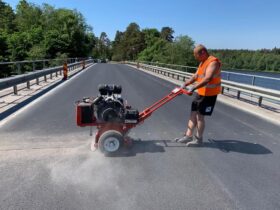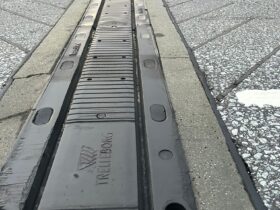Highway Engineering OÜ provides professional services for the repair and maintenance of bridges across Estonia. We ensure the safety and durability of bridge structures by using the best materials and technologies.
Bridge expansion joints are among the most stressed elements, as they are directly subjected to the impact of vehicles. This leads to complex combinations of forces rarely encountered in conventional construction. Joints must resist mechanical stresses such as dynamic impacts, material fatigue, and abrasion, as well as environmental chemical and physical impacts. In bridges and other engineering structures, joints play a crucial role in ensuring the durability and reliability of the structure.
Covered Expansion Joints (ETAG 032-2)
These joints are covered from above and protected from water and dirt ingress. They are often used in areas with heavy traffic.
Work Procedure:
- Removing the old covering: Dismantling the old expansion joint, if present.
- Surface cleaning and preparation: Removal of dirt, dust, and old material remnants.
- Formwork installation: Installing formwork to shape the new joint.
- Filling the expansion joint: Pouring a special elastic material into the joint.
- Finishing the work: Removing the formwork and verifying the work’s accuracy.
Elastic-Filled Expansion Joints (ETAG 032-3)
Joints filled with elastic material that can stretch and compress. Such joints are effective for compensating significant deformations.
Work Procedure:
- Removing the old joint: Removing the existing material.
- Surface preparation: Cleaning and preparing the base.
- Formwork installation: Installing formwork to shape the new joint.
- Filling the joint: Pouring elastic filler into the joint.
- Finishing the work: Removing the formwork and verifying the joint’s quality.
Open-Profile Expansion Joints (ETAG 032-4)
Open joints that allow for some movement but are not as protected from external impacts as closed joints. They are used where moisture ingress is not critical.
Work Procedure:
- Removing the old joint: Removing the old material.
- Surface preparation: Cleaning and preparing the base.
- Open profile installation: Installing metal or polymer profiles.
- Filling the joint: Filling the joint with elastic material.
- Final finishing: Checking the installation and filling of the joint.
Transition Strips
Transition strips form the connection between the bridge structure and adjacent road sections, providing a smoother and safer surface, which is essential for vehicle movement. They effectively compensate for thermal and mechanical impacts, preventing cracks and other damage.
Work Procedure:
- Surface preparation: Cleaning and preparing the base.
- Transition strip installation: Laying and securing the strip that connects two sections of road surface.
- Material fixation: Securing the strip with special fasteners.
- Quality control: Verifying proper installation and strength of the fastening.
Rubber Mat Expansion Joints (ETAG 032-5)
Rubber mats are used to fill joints, providing flexibility and waterproofing.
Work Procedure:
- Removing the old material: Dismantling the old expansion joint.
- Surface cleaning and preparation: Removing dirt and preparing the base.
- Rubber mat installation: Placing and securing the rubber mat in the joint.
- Mat fixation: Using fasteners to secure the mat.
- Installation check: Verifying proper installation and fastening strength.
